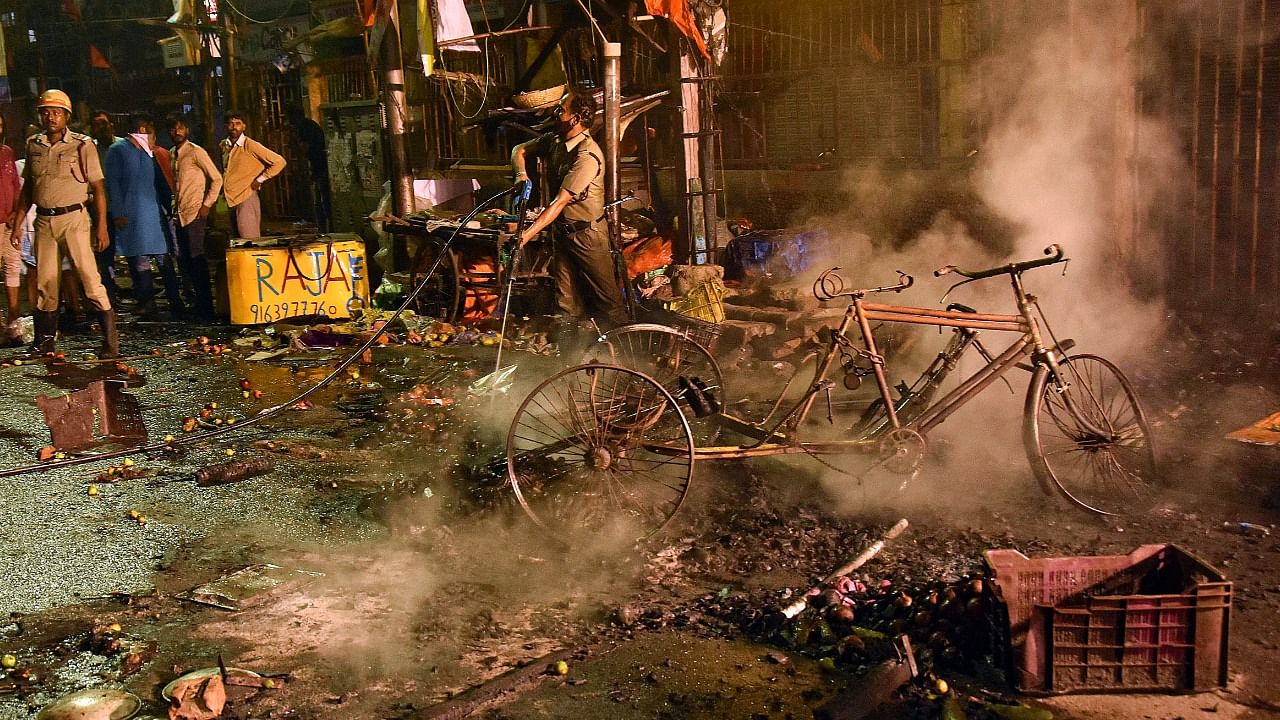
Communal violence broke out this Ram Navami when processions were taken out in various parts of India. At one level the numerical spurt in religious processions and the aggression of some participants (brandishing swords and trishuls) can be seen as part of the ongoing attempt to create a Hindutva consciousness across India.
There is also a discernible pattern, in that the worst violence erupted in three states: Bihar, West Bengal, and Maharashtra. After Uttar Pradesh (80 Lok Sabha seats), these are the big states in terms of numbers of MPs they send to Parliament: Maharashtra (48), West Bengal (42), and Bihar (40). Two of the states, West Bengal and Bihar are ruled by the Opposition, while the Bharatiya Janata Party (BJP) returned to power in Maharashtra last year as part of a coalition after engineering a split in the Shiv Sena. It has since lost a crucial by-election.
Opposition parties, therefore, estimate that in the current scenario the BJP fears losing 30-plus Lok Sabha seats in these three states if elections were held today. In the 2019 general elections, the BJP had a surprise heist of 18 Lok Sabha seats in West Bengal, but its position weakened following the 2021 state elections when the Trinamool Congress (TMC) romped home and the saffron party suffered reverses although it is now the principal opposition in the assembly. The TMC now charges BJP members of leading processions to create communal violence/polarisation. There has been curfew in Hooghly and Howrah since Ram Navami on March 30, even as the BJP state president has said that ‘Bengal resembles Kashmir of the past’.
In Bihar there has been curfew in Nalanda, Bihar-sharif, and Sasaram post-Ram Navami. In 2019, the BJP-led National Democratic Alliance (NDA) won 39 of the 40 Lok Sabha seats. The BJP had 17 seats, the Janata Dal(United) 16, and Ram Vilas Paswan’s Lok Janshakti Party (LJP) 6. This arithmetic changed with JD(U) leader and Chief Minister Nitish Kumar dumping the BJP and forming an alliance government with the Rashtriya Janata Dal (RJD), while the LJP hit a rough patch after Paswan’s death in 2020.
Meanwhile, after the current violence, Kumar said there is an open design to create communal violence, while Deputy Chief Minister Tejashwi Yadav said there is a “Sanghi” experiment to create violence in states where the BJP is weak.
Maharashtra is also uncharted territory as in 2019 the united BJP-Shiv Sena alliance had won 41 of the state’s 48 seats (BJP-23, and Shiv Sena-18). Since then, there have been many political ruptures. Violence erupted in Sambhajinagar (earlier Aurangabad) on Ram Navami. Sanjay Raut, MP, Shiv Sena (Udhav Thackeray faction) said that riots are happening wherever the BJP’s hold is weak.
India’s history has many recorded instances of religious processions leading to riots and violence. What happened this year is a follow up to what happened in 2022 when aggressive processions being taken out on Ram Navami and Hanuman Jayanti, and specifically demanded to go through areas where members of the minority community live in large numbers. Besides, the movement that put the BJP on the political map was the Ram Janmaboomi movement, first led by the Vishwa Hindu Parishad (VHP) and later co-opted by BJP leader Lal Krishna Advani, which culminated in the destruction of the Babri masjid on December 6, 1992. Using religion for aggressive identity mobilisation, therefore, is embedded in the imagination of the Right wing.
Recently, I received a copy of a well-researched report titled Routes of Wrath: weaponsing religious processions that examines communal violence during Ram Navami and Hanuman Jayanti in April 2022. The foreword is written by Justice Rohinton Nariman, who retired from the Supreme Court in 2021, and whom late BJP leader and lawyer Arun Jaitley described to us journalists as ‘the best legal mind among judges’. Edited by senior advocate Chander Uday Singh, the report gives detailed insights into events that unfolded in 11 states last year.
It’s educative to go into details of the mobilisations, from Jharkhand to Karnataka, and Telangana that managed to hold the peace. Bihar, West Bengal, and Maharashtra, witnessed violence last year too, and one could argue they should have been better prepared. As each chapter ends with the media narrative, it is noted that, ironically, the media frequently spins a messaging of ‘Hindus in danger’ after aggressive processions pass through areas and trigger clashes.
Meanwhile, on April 2, Home Minister Amit Shah said that if the BJP returns to power in Bihar, rioters would be “hung upside down.”
(Saba Naqvi is a journalist and author.)
Disclaimer: The views expressed above are the author's own. They do not necessarily reflect the views of DH.